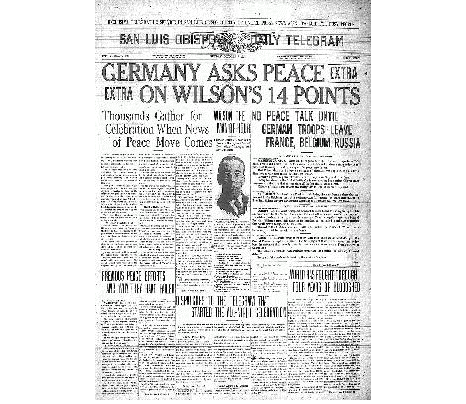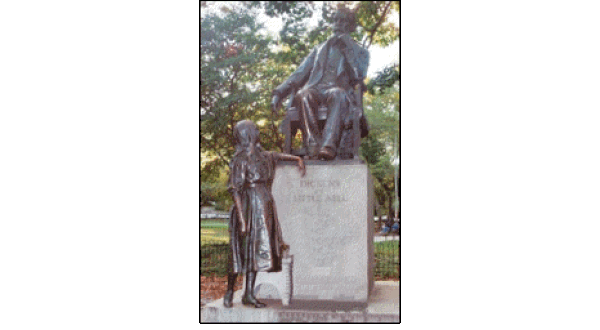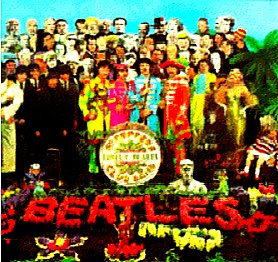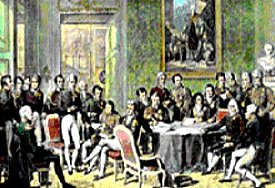Ten Reasons Why
Langdon Winner Is Wrong
About Sgt. Pepper’s Impact
By Harald Frost
HistoryAccess.com, 2023
One of the most interesting sentences in rock ’n’ roll criticism came forth in 1968 from the typewriter of a writer named Langdon Winner:
The closest Western Civilization has come to unity since the Congress of Vienna in 1815 was the week the Sgt. Pepper album was released.
The Congress of Vienna was an international gathering in 1814-15 that redrew the map of Europe after the fall of Napoleon. “Sgt. Pepper’s Lonely Hearts Club Band” was released by the Beatles on June 1, 1967, setting a tone for the Summer of Love with such songs as “With a Little Help From My Friends” and “Lucy in the Sky With Diamonds” and their masterpiece “A Day in the Life.”
At the time I happened to be driving across country on Interstate 80. In each city where I stopped for gas or food – Laramie, Ogallala, Moline, South Bend – the melodies wafted in from some far-off transistor radio or portable hi-fi. It was the most amazing thing I’d ever heard. For a brief while the irreparably fragmented consciousness of the West was unified, at least in the minds of the young.
By the way, the results of the Congress of Vienna didn’t unify Western Civilization at all. Historians R.R. Palmer, Joel Colton, and Lloyd Kramer write that the gathering gave “no satisfaction” to millions of “nationalists and democrats” and “was a disappointment even to many liberals….”
The cover of the most
famous Beatles album.
Statesmen at the
Congress of Vienna.
On the teeming East Side the shrill, wavering notes of shofars, ram’s horn trumpets which in biblical times sounded from the hilltops of Israel to summon the people to festivals and holy days, roused dwellers in the tenements at dawn. Blown by ghetto patriarchs from rooftops, chimneys, and fire-escape stairs, they pierced the din of sirens and bells, sending elderly people to their windows and young people to dancing in the streets.
Millions of people felt happy and relieved for months – not only because the slaughter had stopped, but also because President Woodrow Wilson had embarked on a seemingly unstoppable quest for lasting peace. Wilson in 1919 “inspired the world as no leader in history,” says the documentary film “Paris 1919.” He was called “the god of justice.” His “Fourteen Points” were unifying world-wide ideals, notes historian Margaret MacMillan:
Across Europe there were squares, streets, railway stations and parks bearing Wilson’s name. Wall posters cried, ‘We Want a Wilson Peace.’ In Italy, soldiers knelt in front of his picture….The leaders of the Arab revolt in the desert, Polish nationalists in Warsaw, rebels in the Greek islands, students in Peking, Koreans trying to shake off Japan’s control, all took the Fourteen Points as their inspiration.
Woodrow Wilson – rock star!

3. The Great Exhibition of 1851. Representatives of 40 nations gathered in London at history’s first world’s fair to display arts, crafts, and industries. The exhibition was, to some extent, a cocksure demonstration of British power, but at the same time, many of its six million visitors came away convinced that science, technology, and free trade could guide humanity to unity, peace, and prosperity. Prince Albert, husband of Queen Victoria and the key organizer of the exhibition, remarked, “We are living at a period of most wonderful transition, which tends rapidly to accomplish that great end to which indeed all history points – the realization of the unity of mankind.” (A wordy Victorian way of saying, “It’s getting better all the time.”) Historian G.M. Young says that if a person could pick one decade of the 1800s in which to be young, the 1850s would be the choice, because of its optimism about the future, pervasive good will, and astonishing economic growth. (Young seems to refer to Europe; in the U.S., the second half of the 1850s was marked by the ramp-up to civil war.)

A bronze statue of
Dickens and Little Nell
in Philadelphia.
10. The Beatles in 1964. The peak of the band’s international popularity, and perhaps unifying power as well, didn’t occur in 1967 with “Sgt. Pepper” but in the eight-month period from February 9, 1964, when their first appearance on “The Ed Sullivan Show” cracked open the U.S. and world to them, through the week in April when their records occupied the top five places on the Billboard singles chart, to the late summer/early autumn when the film “A Hard Day’s Night” was greeted with stunned delight by mainstream critics and found a huge audience not only among fans but among previous Beatle-haters in the over-21 crowd. “Sgt. Pepper,” to be sure, is their most famous album, but their impact in ’64, across several age groups, was spectacular, involving many realms: the instant resusitation of a powerful-but-dormant musical form, radical haircuts, overall style, the wit and freshness of the movie, bubblegum cards (purchased in large quantities by youngsters under 10, an age group barely touched by “Sgt. Pepper”), the art of the album cover, inspiration for Bob Dylan, paving the way in the U.S. for the British Invasion, and the linking in many new ways of Britain and America. ●


